Spain, a country rich in history, culture, and diverse landscapes, offers an array of experiences for every traveler. From the sun-drenched beaches of the Costa del Sol to the historic streets of Seville, Spain is a country of passionate flamenco, mouthwatering cuisine, and stunning architectural marvels. This guide explores 12 must-visit destinations in Spain, each offering a unique glimpse into the country’s vibrant culture and breathtaking scenery.
1. Madrid
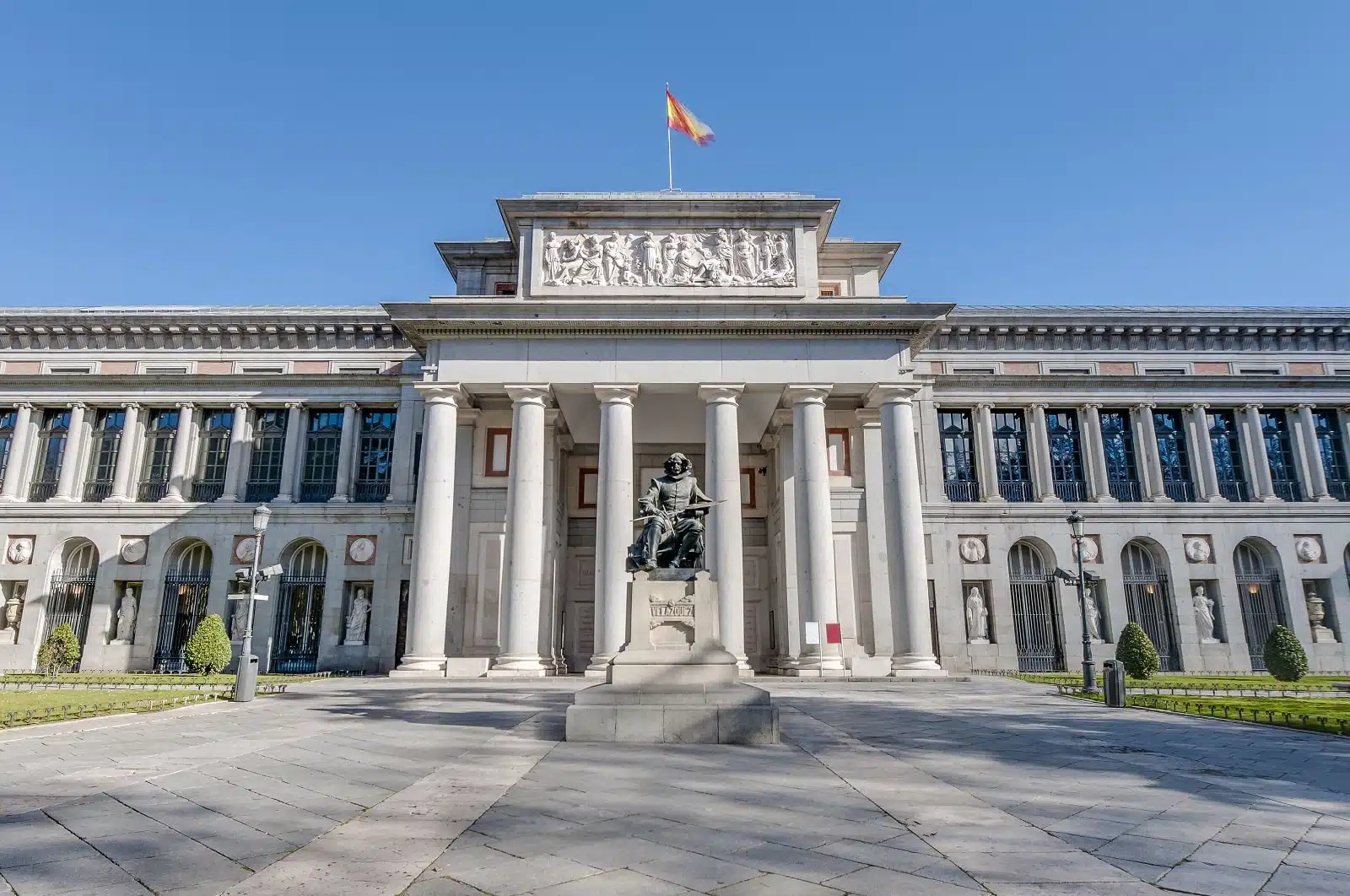
Image Credit: Shutterstock / Anibal Trejo
Madrid, the heart of Spain, is a city where culture, art, and Spanish zest for life converge. As you wander through its grand boulevards and expansive plazas, you’ll be enveloped in an atmosphere that blends historical grandeur with modern vibrancy. The city’s art scene is centered on the Golden Triangle of Art, comprising the Prado, Reina Sofía, and Thyssen-Bornemisza museums, which house some of Europe’s most treasured artworks. Madrid’s Royal Palace showcases the city’s regal past, while the bustling Gran Vía showcases its modern commercial hub. The Plaza Mayor and the Puerta del Sol are lively gathering spots in the historic center, reflecting the city’s social heart. Madrid’s culinary scene is a delightful exploration, from traditional tapas bars in the La Latina district to gourmet dining experiences. The city’s green spaces, notably the Retiro Park, offer a tranquil escape from the urban hustle.
Insider’s Tip
Visit the San Miguel Market for gourmet Spanish tapas.
When to Travel
Spring (March to May) and fall (September to November) offer pleasant weather and fewer crowds.
How to Get There
Madrid-Barajas Adolfo Suárez Airport is the main international gateway, with excellent connections to the city center.
2. Barcelona

Image Credit: Shutterstock / TTstudio
Barcelona is a city where architectural wonder meets Mediterranean charm. The cityscape is adorned with Antoni Gaudí’s whimsical creations, including the iconic Sagrada Família and the enchanting Park Güell, which offer a unique blend of nature and design. The Gothic Quarter, with its narrow medieval streets, stands in contrast to the grid-like layout of the Eixample district. Barcelona’s beachfront, epitomized by the Barceloneta Beach, provides a relaxing seaside experience, while the Montjuïc hill offers panoramic views of the city and the sea. The city’s culinary offerings are as diverse as its neighborhoods, with a range of options from seaside paella eateries to avant-garde Michelin-starred restaurants. The bustling La Boqueria market is a sensory journey through Catalonia’s culinary offerings. Barcelona’s vibrant street life, exemplified by the famous Las Ramblas, is a testament to the city’s lively spirit.
Insider’s Tip
Visit the lesser-known Gaudí sites like Casa Vicens for a more intimate experience.
When to Travel
Late spring (May to June) and early autumn (September to October) offer mild weather and fewer tourists.
How to Get There
Barcelona-El Prat Airport serves international and domestic flights, with easy access to the city center.
3. Seville
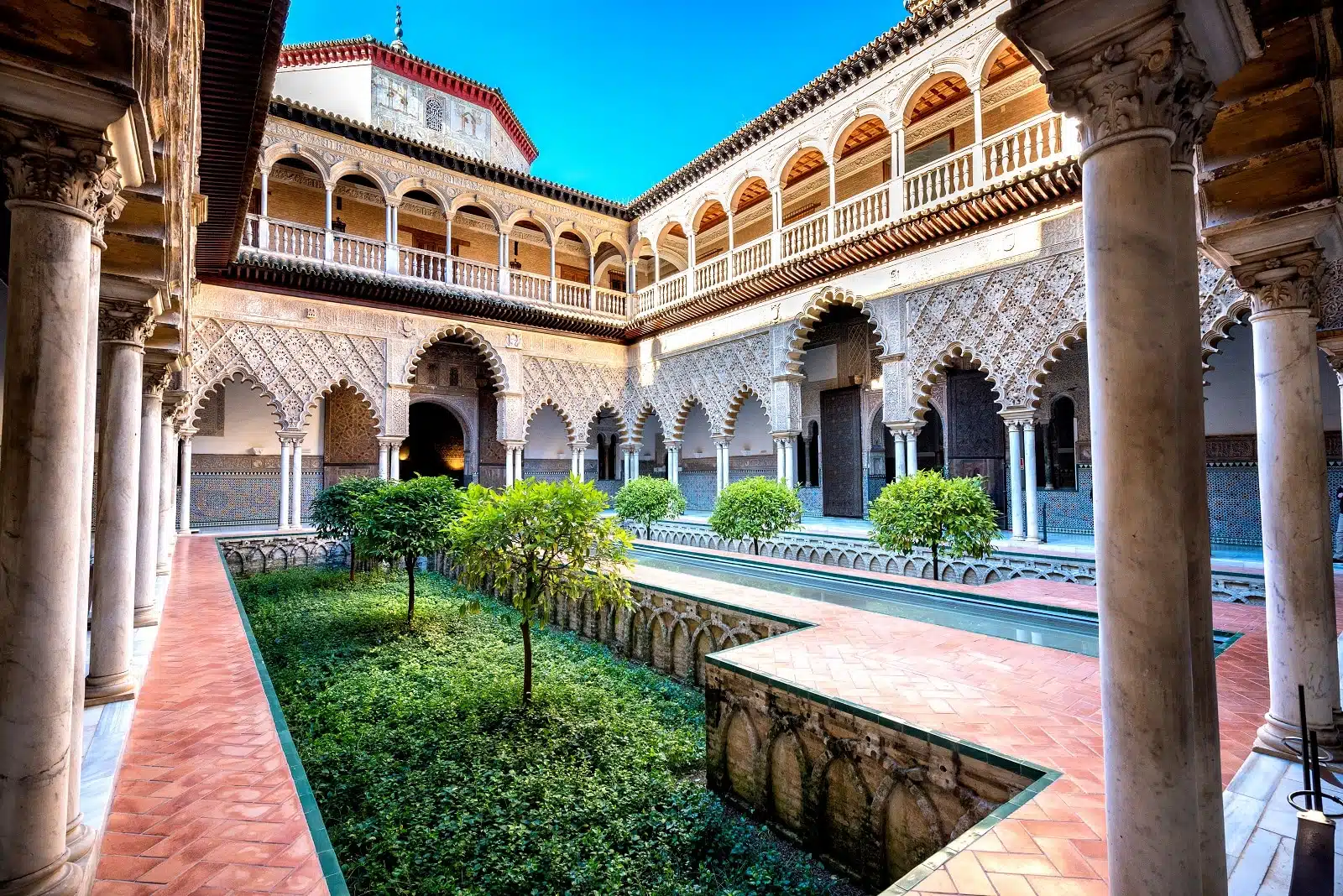
Image Credit: Shutterstock / Massimo Santi
Seville, the Andalusian capital, is a city steeped in history and tradition. The Alcázar Palace, a stunning example of Mudéjar architecture, and the Seville Cathedral, one of the largest Gothic cathedrals in the world, are architectural marvels that tell tales of the city’s past. Seville’s Santa Cruz neighborhood, with its labyrinthine alleys and hidden plazas, is a delightful area to explore on foot. The city is the birthplace of flamenco, and experiencing a live performance in one of the local tablaos is a must. The Plaza de España, with its grandiose scale and intricate tilework, showcases the city’s flair for dramatic and beautiful spaces. Seville’s culinary scene blends traditional Andalusian flavors and innovative gastronomy, best experienced in the tapas bars that dot the city. The Guadalquivir River adds a serene element to the city with picturesque walks and boat tours.
Insider’s Tip
Plan to visit during the Feria de Abril for a true Andalusian celebration.
When to Travel
Spring (April to June) is ideal for pleasant temperatures and local festivals.
How to Get There
Seville Airport has flights from major cities; the city is also well-connected by train to other parts of Spain.
4. Granada
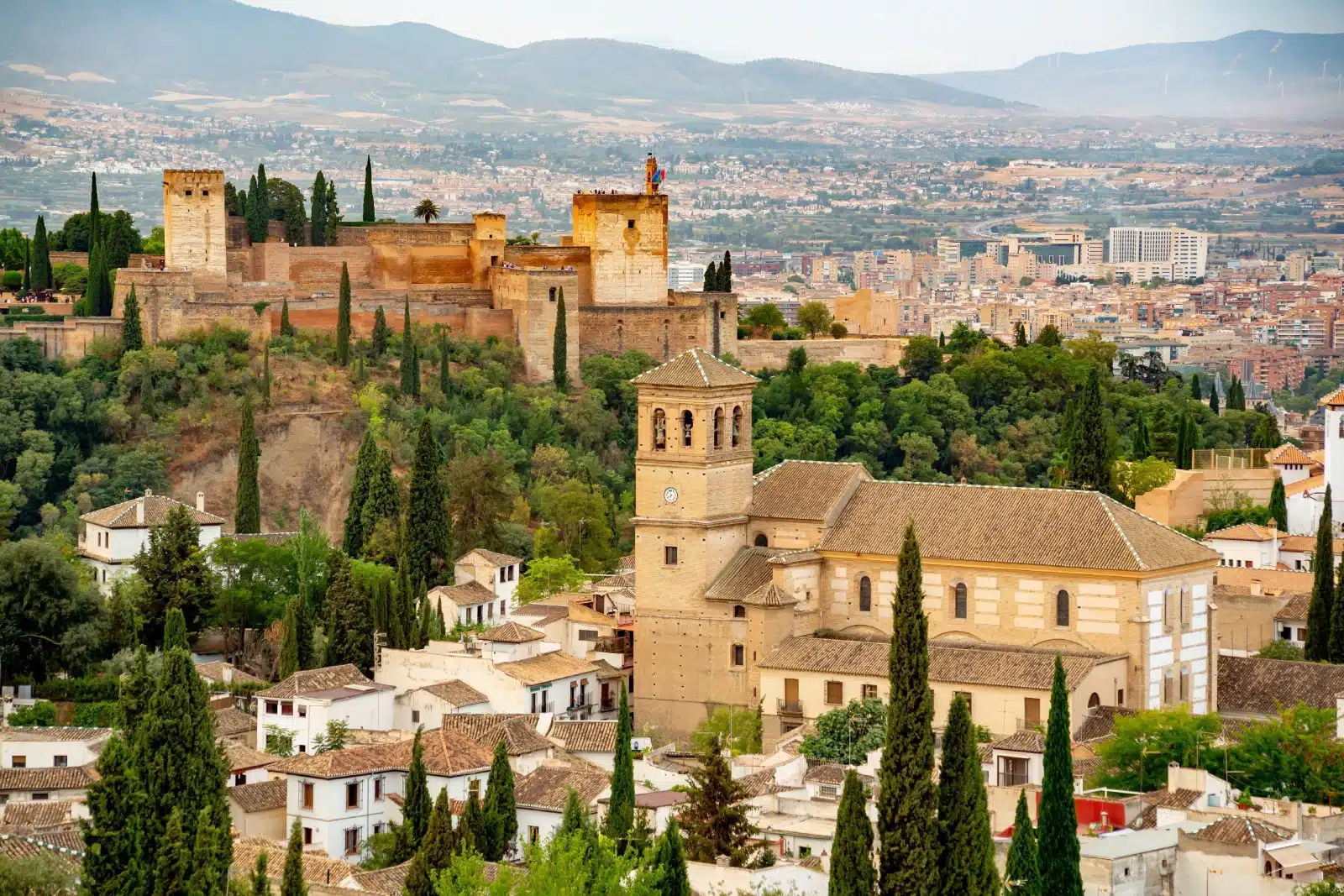
Image Credit: Shutterstock / Florian Augustin
Granada, nestled at the foot of the Sierra Nevada mountains, is a city where Moorish and Spanish cultures merge beautifully. The Alhambra, a majestic fortress and palace complex, is a testament to Islamic art and architecture, offering breathtaking views of the city and the Generalife gardens. The Albaicín, Granada’s old Moorish Quarter, is a UNESCO World Heritage site characterized by narrow winding streets and whitewashed houses. Granada’s tapas culture is unique, with bars offering free tapas with each drink, providing a taste of local cuisine. The city’s flamenco heritage is palpable, particularly in the Sacromonte neighborhood, known for its cave dwellings and intimate flamenco shows. Granada’s historical depth is further explored in its various churches and monasteries, which blend Gothic, Renaissance, and Baroque styles. The city’s vibrant street life and cultural festivals add to its allure as a destination that seamlessly blends history with lively modern culture.
Insider’s Tip
Visit the Alhambra at night for a different perspective and fewer crowds.
When to Travel
Spring (April to June) and fall (September to October) offer mild weather and smaller crowds.
How to Get There
Granada Airport serves domestic flights; the city is accessible by bus and train from other Spanish cities.
5. Valencia
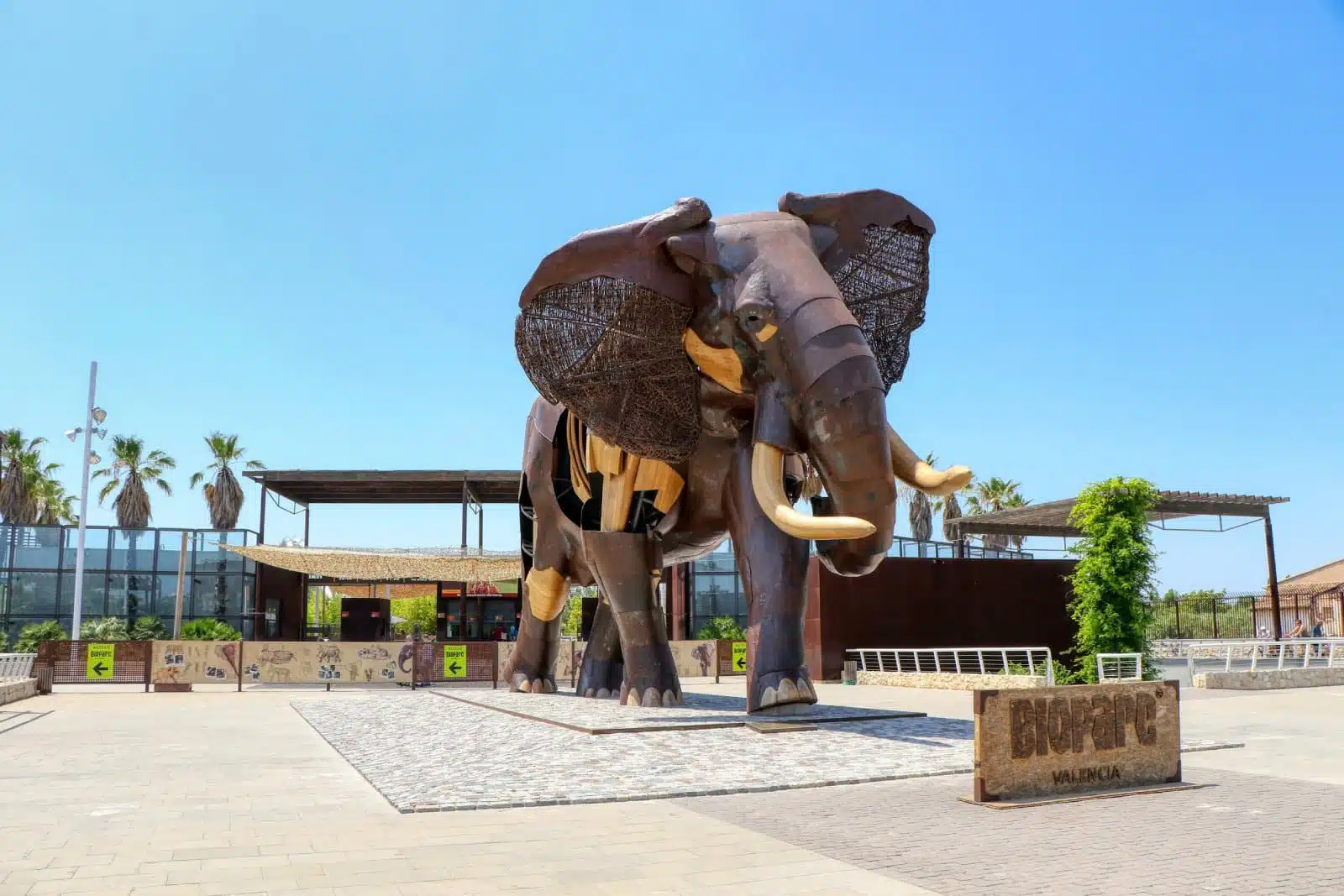
Image Credit: Shutterstock / Massimo Todaro
Valencia, a harmonious blend of past and future, is a city where tradition meets innovation. The futuristic City of Arts and Sciences, an architectural masterpiece, starkly contrasts the Gothic Valencia Cathedral in the city’s historic heart. Valencia is the birthplace of paella, and savoring this iconic dish in its hometown is a culinary rite of passage. The city’s Turia Gardens, a verdant oasis created in a former riverbed, offer miles of walking paths, sports facilities, and cultural venues. The old town’s charm is evident in its bustling squares, particularly the Plaza de la Virgen and the Plaza del Ayuntamiento. Valencia’s beaches, just a short tram ride from the city center, provide a perfect setting for relaxation and water sports. The city’s traditional festivals, including the famous Las Fallas, are a spectacle of artistry and pyrotechnics, showcasing Valencia’s vibrant cultural heritage.
Insider’s Tip
Rent a bike to explore the Turia Gardens and the city’s many bike paths.
When to Travel
March to May for pleasant weather and the famous Las Fallas festival.
How to Get There
Valencia Airport offers domestic and European flights; the city is also well-connected by train.
6. Bilbao
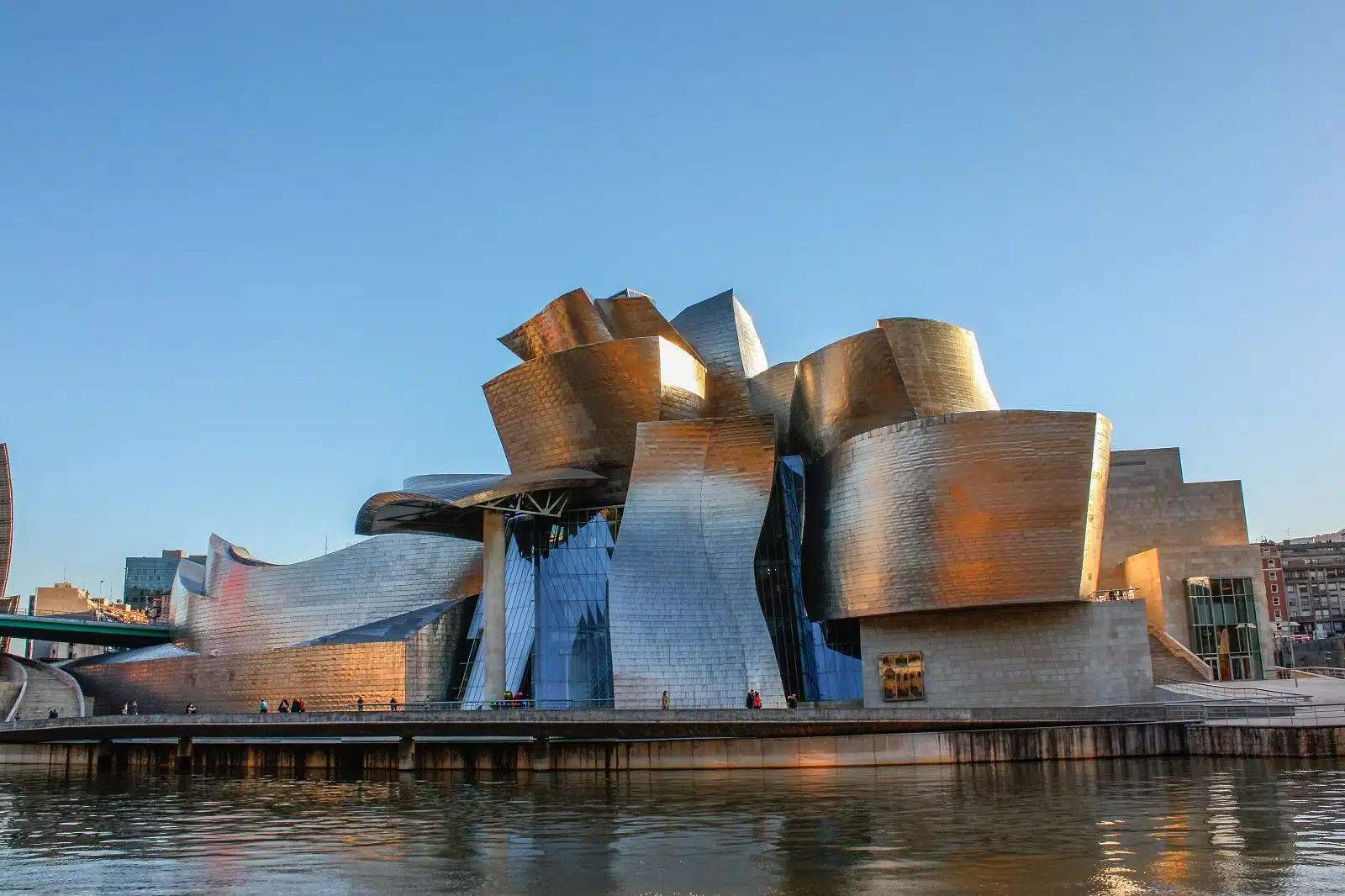
Image Credit: Shutterstock / Alisia Luther
Once an industrial heartland, Bilbao has transformed into a center of art and culture. The Guggenheim Museum, a stunning work of contemporary architecture, houses an impressive collection of modern and contemporary art. The city’s rejuvenation is evident in its revitalized riverfront and the Abandoibarra district. Bilbao’s Old Town, or Casco Viejo, with its seven historic streets, is a charming area to explore, offering quaint shops, traditional pintxo bars, and historic landmarks like the Santiago Cathedral. The city’s culinary scene is a highlight, emphasizing Basque cuisine, known for its bold flavors and fresh ingredients. Bilbao’s cultural calendar is packed with festivals and events, reflecting the city’s dynamic and creative spirit. The surrounding landscapes of the Basque Country, with its rolling hills and rugged coastline, are easily accessible and offer a natural complement to the urban experience.
Insider’s Tip
Take a walk along the Nervión River for stunning views of the city and the Guggenheim.
When to Travel
Late spring (May to June) and early fall (September to October) for mild weather and fewer tourists.
How to Get There
Bilbao Airport is the main gateway, with good transport links to the city center.
7. Santiago de Compostela

Image Credit: Shutterstock / Georgios Tsichlis
Santiago de Compostela, the final destination of the Camino de Santiago pilgrimage routes, is a city imbued with a deep sense of history and spirituality. The Santiago Cathedral, a stunning Romanesque structure with later Gothic and Baroque additions, is the heart of the city. The cathedral’s botafumeiro, one of the largest incense burners in the world, is a sight to behold during the pilgrim’s mass. The city’s historic center, a labyrinth of narrow medieval streets, is a UNESCO World Heritage site filled with historic buildings, cozy cafes, and artisan shops. Santiago’s culinary scene offers a taste of Galician cuisine, known for its seafood and hearty dishes. The city’s surrounding countryside, with its rolling hills and traditional Galician villages, provides a serene backdrop to the spiritual journey of the Camino.
Insider’s Tip
Explore the lesser-known routes of the Camino for a more solitary experience.
When to Travel
Summer (June to August) for the best weather, though it’s also the busiest time.
How to Get There
Santiago de Compostela Airport has domestic and European flights; the city is also accessible by train and bus.
8. Córdoba
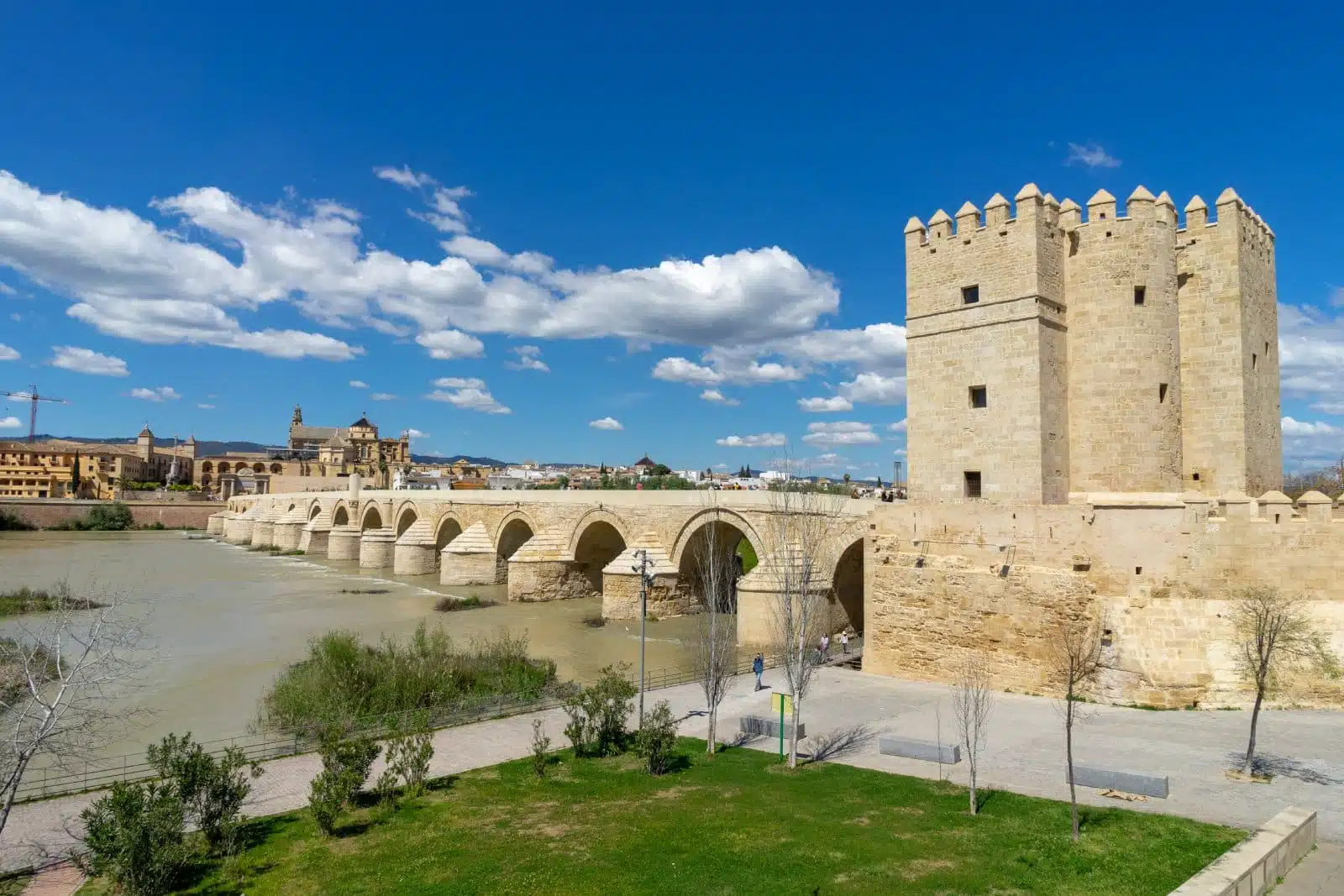
Image Credit: Shutterstock / Dani Llao Calvet
Córdoba, once the capital of the Islamic Caliphate in Spain, is a city where cultures converge. The Mezquita, a mosque-cathedral, symbolizes the city’s rich Islamic heritage, with its stunning forest of columns and ornate mihrab. The city’s Jewish Quarter, with its narrow lanes and whitewashed houses, highlights its multicultural past. Córdoba’s patios, adorned with vibrant flowers, are celebrated each May during the Patio Festival when private homes open their courtyards to the public. The city’s Roman heritage is also visible in structures like the Roman Bridge and the Temple. Córdoba’s cuisine reflects its diverse history, blending Arab, Jewish, and Christian influences. The Guadalquivir River complements the city’s tranquil ambiance, which adds a serene element to its historic charm.
Insider’s Tip
Visit during the Patio Festival in May when private homes open their courtyards to the public. When to Travel
Spring (April to June) for pleasant temperatures and local festivals.
How to Get There
Córdoba is well-connected by high-speed train to Madrid and Seville.
9. Ibiza

Image Credit: Shutterstock / Tint Media
Ibiza, known globally for its pulsating nightlife, is an island of contrasts, offering serene natural beauty alongside its famous party scene. The island’s UNESCO-listed old town, Dalt Vila, is a maze of cobbled streets, historic buildings, and panoramic views. Ibiza’s beaches range from bustling resorts to secluded coves, each with unique charm. The island’s interior is dotted with charming villages, pine forests, and olive groves, offering a peaceful escape from the coastal buzz. Ibiza’s hippie markets, such as Las Dalias, display the island’s bohemian spirit. The island’s culinary scene is as diverse as its landscapes, with various dining options from beachfront chiringuitos to upscale restaurants. Ibiza’s clear waters are ideal for water sports, including diving, sailing, and paddleboarding.
Insider’s Tip
Discover the quieter northern part of the island for a more relaxed experience.
When to Travel
Late spring (May to June) and early fall (September to October) for good weather and fewer crowds.
How to Get There
Ibiza Airport serves both domestic and international flights.
10. The Costa del Sol
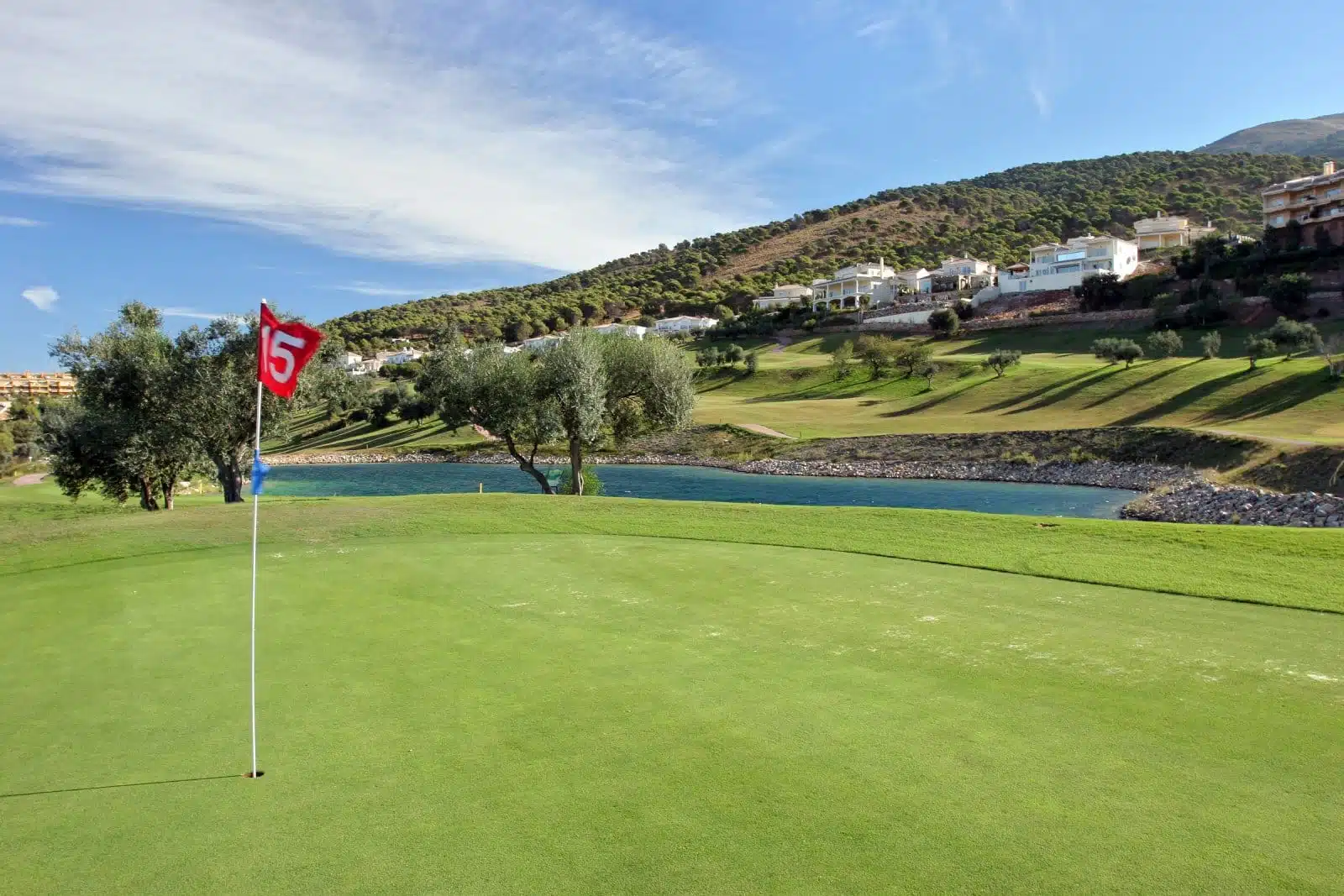
Image Credit: Shutterstock / Nick Stubbs
The Costa del Sol, stretching along Spain’s southern coastline, is a sun-drenched paradise known for its golden beaches, upscale resorts, and vibrant nightlife. The region is home to popular destinations like Marbella, known for its luxury yachts, designer boutiques, and Torremolinos, with its lively beach scene. Beyond the glitz, the Costa del Sol offers charming whitewashed villages nestled in the hills, such as Mijas and Frigiliana. The region’s cuisine is a highlight, with fresh seafood and traditional Andalusian dishes. The city of Málaga, the birthplace of Picasso, offers a rich cultural experience with museums, historic sites, and a bustling port area. The Costa del Sol’s numerous golf courses are a draw for enthusiasts, while its natural parks provide opportunities for hiking and exploring the Andalusian countryside.
Insider’s Tip
Visit the historic city of Málaga, the birthplace of Picasso, for its museums and cultural sites. When to Travel
Summer (June to August) for beach weather, though the shoulder seasons are quieter and still pleasant.
How to Get There
Málaga-Costa del Sol Airport is the main gateway to the region.
11. The Canary Islands
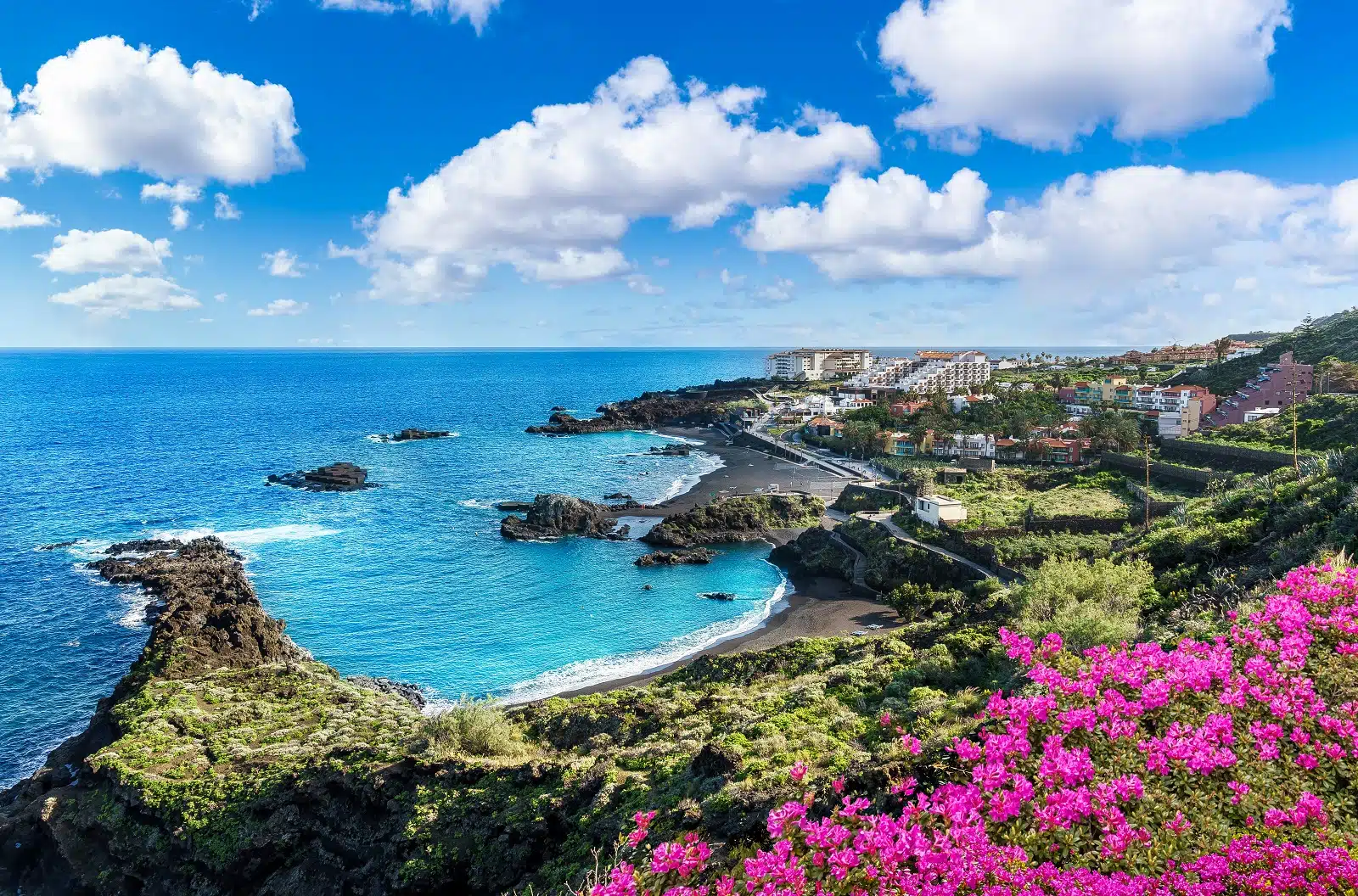
Image Credit: Shutterstock / Serenity-H
The Canary Islands, an archipelago off the northwest coast of Africa, are a world apart from mainland Spain, offering diverse landscapes and a unique cultural experience. Each island has its distinct character: Tenerife boasts the stunning Teide National Park; Lanzarote is known for its volcanic landscapes and César Manrique’s artistic influence; Gran Canaria offers a mix of beaches, mountains, and historic towns. The islands’ subtropical climate makes them a year-round destination, with hiking, cycling, and water sports opportunities. The Canaries’ cuisine reflects their geographical location, with a blend of Spanish, African, and Latin American influences. The islands are also known for their vibrant festivals, including Tenerife’s famous Carnival, one of the largest in the world.
Insider’s Tip
Explore the lesser-known islands like La Gomera or El Hierro for a more off-the-beaten-path experience.
When to Travel
Spring (April to June) and autumn (September to November) offer mild weather and fewer tourists.
How to Get There
Each island has its own airport, with Tenerife and Gran Canaria being the main international hubs.
12. The Pyrenees
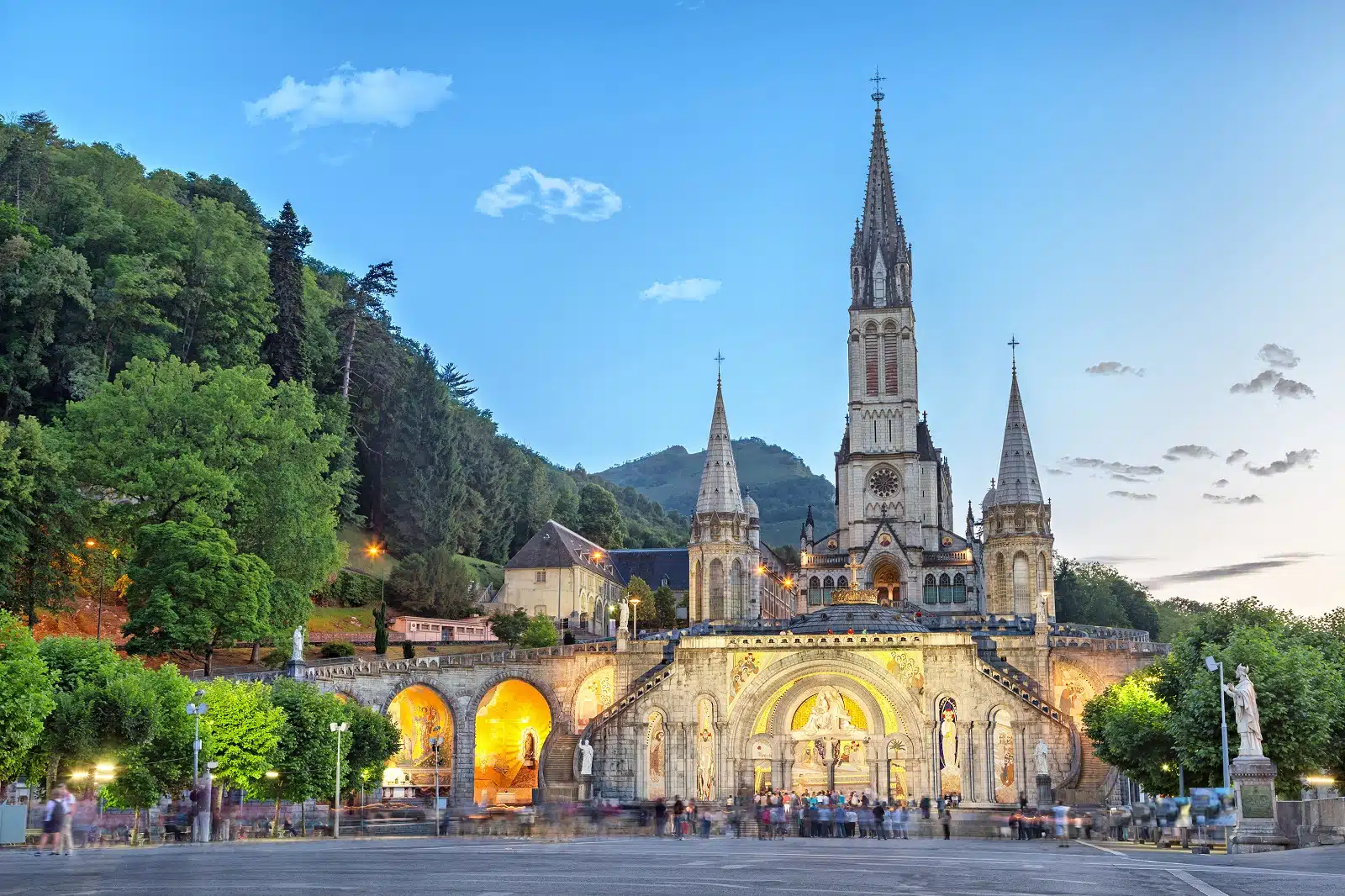
Image Credit: Shutterstock / Sergey Dzyuba
The Pyrenees, a majestic mountain range forming a natural border between Spain and France, offer a rugged and beautiful landscape for outdoor enthusiasts. The Spanish side of the Pyrenees features national parks like Ordesa y Monte Perdido and Aigüestortes i Estany de Sant Maurici, with stunning hiking trails, alpine lakes, and diverse wildlife. The region is rich in cultural heritage, with Romanesque churches, medieval castles, and traditional villages. The Pyrenees are a haven for adventure sports, including skiing, mountain biking, and white-water rafting. The local cuisine, with dishes like lamb stew and trout from the mountain streams, reflects the region’s rustic charm. The Pyrenees offer a tranquil and scenic escape, with breathtaking natural beauty and a slower pace of life.
Insider’s Tip
Visit the Ordesa y Monte Perdido National Park for some of the most spectacular hiking trails in the Pyrenees.
When to Travel
Summer (June to August) for hiking and winter (December to March) for skiing.
How to Get There
Accessible by car or bus from major cities like Barcelona, the nearest airports are in Zaragoza and Toulouse (France).
The Bottom Line
Spain offers a rich array of experiences, from the bustling streets of Madrid to the tranquil beaches of the Costa del Sol. Each destination in this vibrant country presents an opportunity to immerse yourself in Spain’s diverse culture, history, and natural beauty. As you explore Spain, embrace the local customs, indulge in the cuisine, and soak in the landscapes that make this country a beloved destination for travelers around the world.
More From The Green Voyage
Top 10 Trending Travel Destinations 2024
6 Essential Banking Apps for International Travel – Managing Your Finances on the Go Traveling With Kids – 10
Tips to Create Memorable Family Holidays
The post Country Guide to Spain 2024 – Culture, History, and Natural Beauty first appeared on The Green Voyage.
Featured Image Credit: Shutterstock / Unai Huizi Photography.
For transparency, this content was partly developed with AI assistance and carefully curated by an experienced editor to be informative and ensure accuracy.
Tips for Trip Success
Book Your Flight
Find an inexpensive flight by using Kayak, a favorite of ours because it regularly returns less expensive flight options from a variety of airlines.
Book Your Hotel or Special Accommodation
We are big fans of Booking.com. We like their review system and photos. If we want to see more reviews and additional booking options, we go to Expedia.
You Need Travel Insurance!
Good travel insurance means having total peace of mind. Travel insurance protects you when your medical insurance often will not and better than what you get from your credit card. It will provide comprehensive coverage should you need medical treatment or return to the United States, compensation for trip interruption, baggage loss, and other situations.Find the Perfect Insurance Plan for Your Trip
